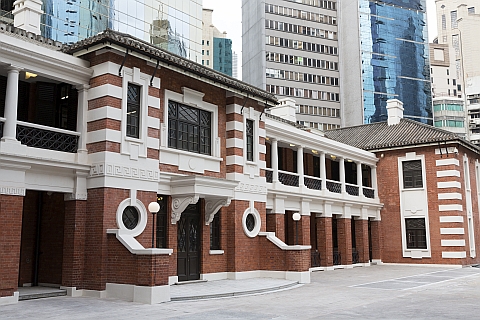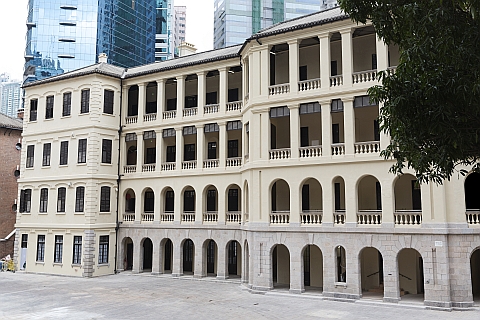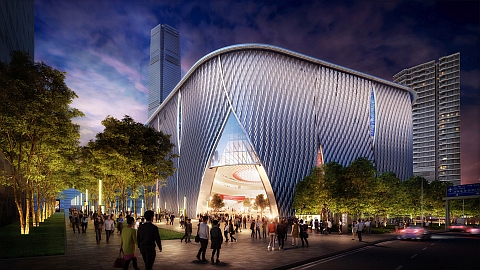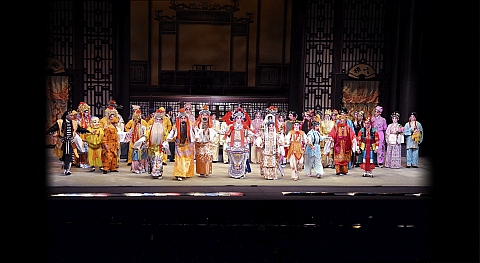A new milestone for cultural development
16 December 2018
Embodying the soul of a city, culture and arts not only enrich the spiritual life of its citizens, but also motivate the progress of society. With the successive commissioning of major projects in town, the development of arts and culture in Hong Kong has reached a new milestone.
 |
 |
The first of the major projects to be mentioned is the revitalisation of the Central Police Station Compound, now known as Tai Kwun, which is situated at the core of Central. Under the partnership of the Government and the Hong Kong Jockey Club, three declared monuments, namely the former Central Police Station, the Central Magistracy and the Victoria Prison, comprising 16 historic buildings altogether have been conserved and revitalised, in addition to the construction of an art gallery and a multi-purpose auditorium.
As a new cultural landmark, Tai Kwun is a centre for heritage and arts, offering rich historical, cultural and artistic experiences to enhance public knowledge and appreciation of contemporary arts, performing arts and community history.
Since its opening on 29 May this year, the overwhelmingly popular Tai Kwun has received over one million visitors. In fact, I have been one of the visitors on various occasions over the past six months so much so that I can say that I have a close affinity with Tai Kwun.
Another cultural landmark, the West Kowloon Cultural District (WKCD), is set to create a vibrant cultural quarter for the city, facilitating interaction, collaboration and development of the local arts scene. Various WKCD facilities will come into operation one after another, starting with the Xiqu Centre, which is scheduled to launch its grand opening on 20 January 2019. Having the mission of preserving, promoting and developing the art of Chinese opera, the Xiqu Centre will become the first world-class performing arts venue completed in the WKCD.
 |
 |
Inspired by the concept of a traditional Chinese lantern, the Xiqu Centre entails a blend of traditional and contemporary elements in its architectural design to reflect a new modern image of Chinese opera. The building’s façade mimics a bead curtain, akin to the type often seen in Chinese traditional theatre. The exterior wall is shaped to resemble parted stage curtains, which are “pulled open” at various points. Located at the heart of the Xiqu Centre is the Grand Theatre, which employs a suspension design to allow a wide atrium space in order to increase the accessibility of culture and arts to the general public.
Before its official opening, the Xiqu Centre will be opened to the public from 30 December 2018 to 6 January 2019, presenting an array of free programmes and activities. The Chinese Artists Association of Hong Kong will stage rituals and performances on 30 December 2018 to mark the start of the use of the Grand Theatre in accordance with the customary practice of the xiqu sector.
The opening season of the Xiqu Centre will see the performance of the Cantonese opera classic The Reincarnation of Red Plum and a host of performances by the Hong Kong Cantonese Opera Chamber of Commerce and the Plum Blossom Award Art Troupe of the Chinese Theatre Association. I believe that, when the music of gongs and drums starts at the Xiqu Centre, it will kick-start a new wave of xiqu mania.
It is worth mentioning that next year (2019) will see the tenth anniversary of the inclusion of Cantonese opera in the Representative List of the Intangible Cultural Heritage of Humanity. The opening of the Xiqu Centre next year will be conducive to developing a locally-rooted xiqu network in Hong Kong so that the culture of the local Cantonese opera will continue to thrive and have a regional, or even international, impact on arts development.
Besides, the construction works of other arts and cultural facilities in the WKCD are progressing in full swing. Examples include Freespace and the Art Park, which will start offering novel artistic experiences to visitors in the second quarter of 2019, and the M+, a museum focusing on modern and contemporary visual culture, which is planned to open at the end of 2020. In addition, the foundation works of the Hong Kong Palace Museum and the Lyric Theatre Complex have been completed, while the main superstructure works of the latter has just commenced.
On the other hand, well-planned cultural facilities at the district level are also important for enriching the lives of citizens. The East Kowloon Cultural Centre now under construction is expected to be opened in 2021. Moreover, subsequent to the funding approval given by the Finance Committee of the Legislative Council in 2018, the pre-construction activities for the New Territories East Cultural Centre in Area 11, Fanling, currently under active planning by the Government, are expected to be completed in the first quarter of 2022. Other cultural works projects to be launched in the next ten years include the expansion of the Hong Kong City Hall and the renovation of the Hong Kong Cultural Centre.
Hardware needs software to work. The Government will make every endeavour to allocate more resources to support the local arts and cultural sector. In 2018-19, total Government expenditure on culture and arts is over $4.7 billion, excluding capital works expenditure, the Arts and Sports Development Fund (Arts Portion) and the Cantonese Opera Development Fund.
The Government’s total recurrent subvention for the nine major performing arts groups and the Hong Kong Arts Development Council for 2018-19 increased by about 12.9% when compared to that for 2017-18. To support arts groups of all sizes, the Government will continue to increase the recurrent subvention for the nine arts groups and the Council in the coming year.
The Government’s support for the development and continuity of culture and arts will be ongoing. By creating an environment that is conducive to diversified development and investing in nurturing talent, we hope to enhance Hong Kong’s hard and soft powers and develop Hong Kong into an international cultural metropolis which has its roots in the Chinese culture while embracing cultural diversity.

